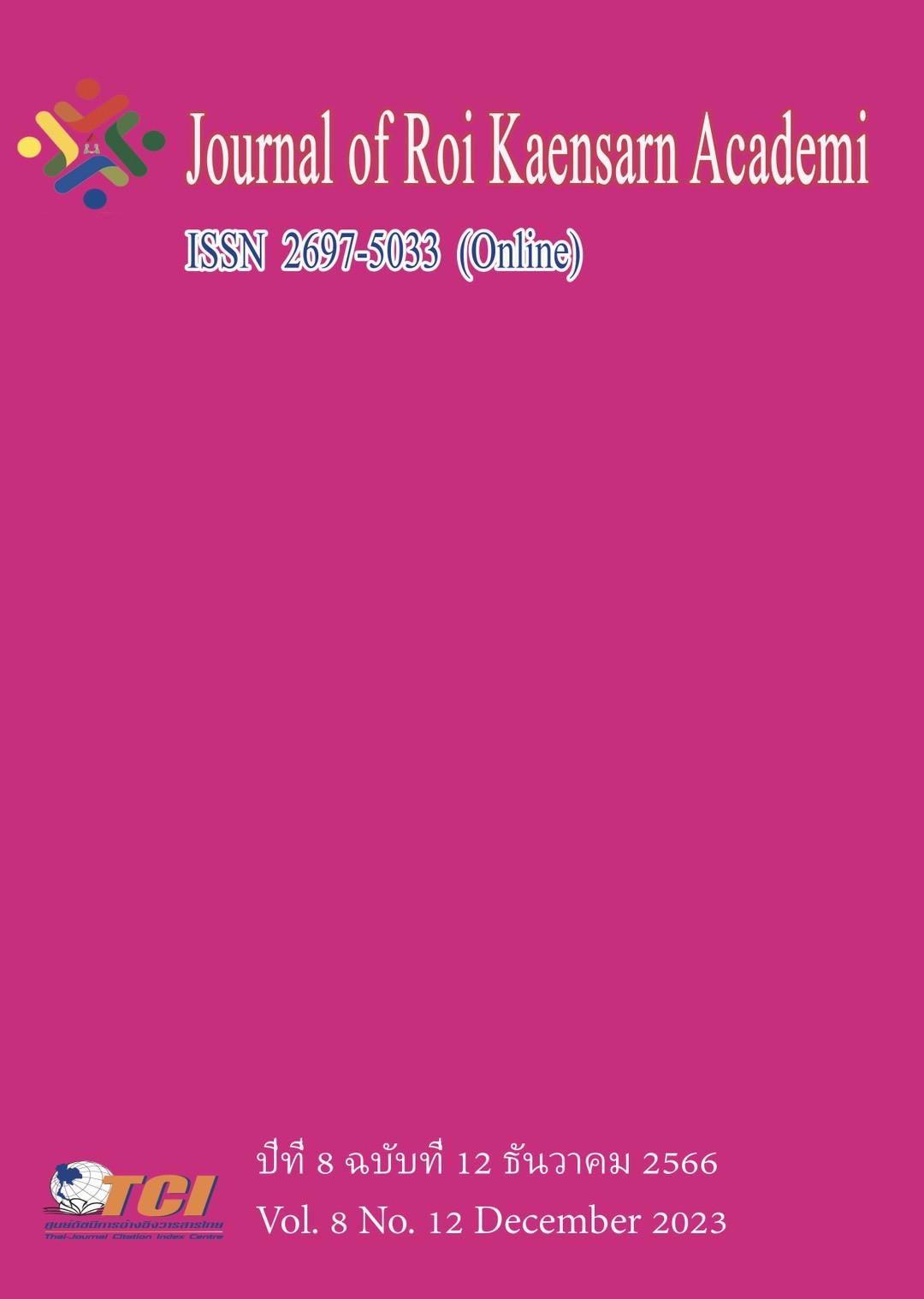“The Workforce Agility of Organizations Awarded the Best Employers in Thailand”
Main Article Content
Abstract
The objective of this study is to investigate the strategies employed by firms recognized as Organizations Awarded the Best Employers Thailand 2020 to promote an Agile Working Environment. Participants in the study were middle managers in two cases (two companies), and in each case, there was one informant who was a human resource manager at the middle manager level. Additionally, this study also seeks to create a Workforce Agility Model for top firms. Using a case study methodology, researchers conducted comprehensive interviews, utilizing both in-depth and semi-structured formats, and employed a tape recorder to capture the data. The thematic analysis involves the identification and exploration of recurring themes and patterns through the process of coding.
The present study has identified five key issues regarding the promotion of an Agile Working Environment among Organizations Awarded the Best Employers Thailand including 1) A family and teamwork culture in a firm fosters a sense of familial connection and mutual support, making employees feel cared for and inclined to help each other. 2) Self-learning and personal growth. The organization assisted self-directed learning and innovation, as well as training and development initiatives aimed at enhancing individuals' potential. 3) Employees with a growth mindset exhibit a service-oriented approach, demonstrating agility and promptness in their interactions with consumers. 4) Flexible structure and empowerment provide adaptability and employee autonomy in organizational design and management. 5) Comprehensive communication across various channels—two-way, top-down, and bottom-up—and technology to improve communication and workflow are the main priorities. The research contributes to the existing body of evidence and theory on workforce agility, particularly within organizations that have been recognized as Organizations Awarded the Best Employers Thailand in the year 2020. The policy aims to enhance worker agility through the integration of research findings. The research findings assist HR practitioners by providing insights on how to develop activities that increase worker agility.
Article Details
References
Bogdan, R., & Biklen, S. K. (1997). Qualitative research for education. Boston, MA: Allyn & Bacon.
Bowen, G. A. (2009). Document analysis as a qualitative research method. Qualitative research journal, 9(2), 27-40.
Careervisa Digital. (2021). Take a look at the 8 Best Employers Organizations Outstanding Employers – Companies to Work for 2020 from Kincentric. Retrieved February 8, 2022. from https://www.careervisathailand.com/8-best-employers-thailand-2020-kincentric/.
Castillo-Montoya, M. (2016). Preparing for Interview Research: The Interview Protocol Refinement Framework. The Qualitative Report, 21(5), 811-831. Retrieved from https://nsuworks.nova.edu/tqr/vol21/iss5/2.
Creswell, J. W., Hanson, W. E., Clark Plano, V. L., & Morales, A. (2007). Qualitative research designs: Selection and implementation. The counseling psychologist, 35(2), 236-264.
Dyer, L., & Shafer, R. (2003). Dynamic organizations. RS Peterson, EA Mannix, eds. Managing People in Dynamic Organizations, 7-40.
Hopp, W. J., & Oyen, M. P. (2004). Agile workforce evaluation: a framework for cross-training and coordination. Iie Transactions, 36(10), 919-940.
Kidd, P. T. (1995). Agile manufacturing: forging new frontiers. Addison-Wesley Longman Publishing Co., Inc.
Lupang. (2019). Get to know 'Agile', the concept of working in a new era of organization. Retrieved 5 February 2022, from https://www.marketingoops.com/news/agile-working/.
Muduli, A. (2017). Workforce agility: Examining the role of organizational practices and psychological empowerment. Global Business and Organizational Excellence, 36(5), 46-56.
Nakarin Wanakijpaiboon. (2020). The True Heart of Agile from the Inventor of the Agile Manifesto. Retrieved 8 February. 2022, from https://thestandard.co/podcast/thesecretsauce136/.
Plonka, F. E. (1997). Developing a lean and agile workforce. Human Factors and Ergonomics in Manufacturing & Service Industries, 7(1), 11-20.
Ponterotto, J. G. (2005). Qualitative research in counseling psychology: A primer on research paradigms and philosophy of science. Journal of counseling psychology, 52(2), 126.
Prakal Pantapangkul. (2021). Agile-focused organizations also need Workforce Agility. Retrieved 5 February 2022, from https://prakal.com/2019/02/04/Organization-focused-agile- There must be -wor/.
Pusenius, K. (2019). Agile mindset in the workplace: moving towards organizational agility. Master’s Thesis. : Turku University of Applied Sciences.
Sherehiy, B., & Karwowski, W. (2014). The relationship between work organization and workforce agility in small manufacturing enterprises. International Journal of Industrial Ergonomics, 44(3), 466-473.
Tracy, K. (1995). Action-implicative discourse analysis. Journal of language and social psychology, 14(1-2), 195-215.
Yin, R. K. (2009). Case study research: Design and methods(Vol. 5). sage.
Yusuf, Y. Y., Sarhadi, M., & Gunasekaran, A. (1999). Agile manufacturing: The drivers, concepts and attributes. International Journal of Production Econo, 62(1-2), 33-43.
